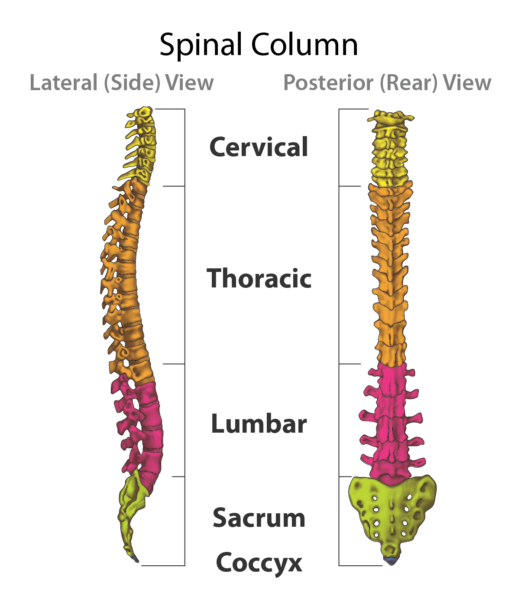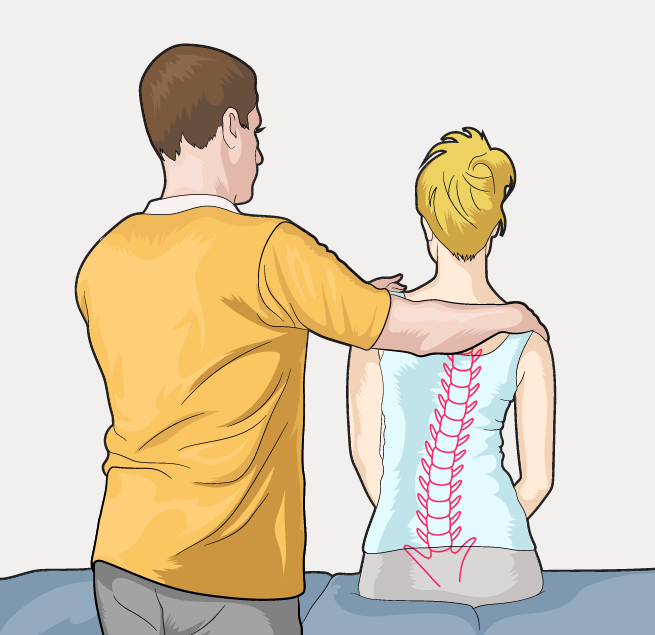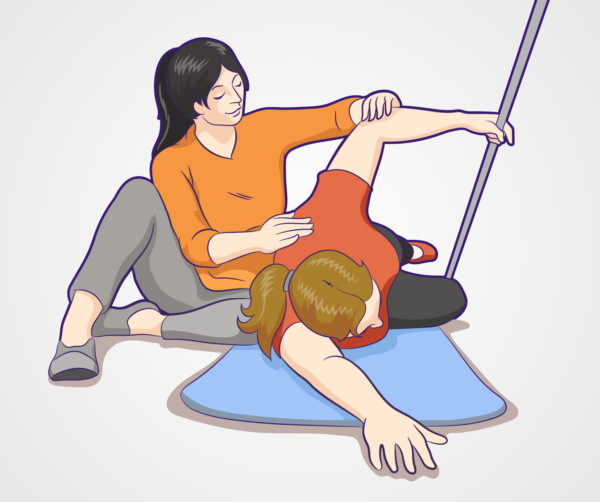Scoliosis In Adults – The Symptom Causes, And Treatment Options
Scoliosis is a surprisingly common condition in adults that causes the spine to abnormally curve to the side. This can lead to a host of physical complications and other issues, making it essential for adults to understand what causes it, the associated symptoms, and how to treat it. That being said, the following guide provides everything you need to know about adult scoliosis.
What Is Scoliosis In Adults?
Scoliosis in adults is diagnosed the same way as scoliosis in adolescents: if the spine curves more than 10 degrees to the side and there is rotation, it is officially diagnosed as scoliosis. Scoliosis can cause several visible signs, including uneven hips and shoulders, a visible spinal curvature when viewed from behind or the side, and one shoulder being more prominent.
These signs can be identified during a basic physical exam. However, diagnostic imaging, such as x-rays, are required to make a definitive diagnosis.

There are a couple of ways that scoliosis can occur in adults. First of all, an adult with scoliosis may have developed the condition during adolescence, but it just wasn’t noticed or diagnosed until they were an adult. This can happen if the scoliosis was mild as a child and the curvature progressed slowly into adulthood. This type of scoliosis is generally idiopathic, meaning the cause is unknown.
The second way an adult can develop scoliosis is if the condition develops for the first time in adulthood. When this happens, it tends to be degenerative, which means it is caused by a degenerative issue in the spine, such as arthritis and disc degeneration.
Older adults often develop degenerative scoliosis simply due to the natural process of aging. In fact, it’s estimated that up to 38% of adults over the age of 60 have some form of scoliosis.
It’s important to note that unlike most idiopathic scoliosis cases diagnosed during childhood, adult scoliosis can cause more severe symptoms, such as discomfort, pain, and difficulty during everyday activities. There are also several risk factors of adult scoliosis that you should be aware of.
Risk Factors Of Scoliosis During Adulthood
Although the majority of scoliosis cases are idiopathic, there are a few risk factors you should be aware of when it comes to adult scoliosis. These risk factors include the following:
- Age: After 40 years of age the incidence of scoliosis increases and, the majority of scoliosis cases in adults occur in people over the age of 60. The older you are, the more likely you are to develop scoliosis. With age, the muscles and ligaments may weaken over time, causing the spine to move out of alignment. Additionally, the discs between each vertebrae can wear down with age, leading to a more severe spine curvature.
- Family history: There have been links between scoliosis and genetics. If you have a close family member with the condition, you may be at an increased risk of developing it. It’s estimated that first-degree relatives of scoliosis patients have an 11% chance of developing it.
- Gender: More women develop scoliosis than men, both in childhood and adulthood. As such, female adults have a greater risk of developing scoliosis.
What Causes Adult Scoliosis?
The cause of adult scoliosis is not always known. As previously mentioned, some cases are simply a progression of idiopathic scoliosis that was never diagnosed or corrected during adolescence. However, adult scoliosis can also be caused by various degenerative conditions, previous spinal surgeries, or pelvic obliquity (misalignment).
Degenerative Conditions
A degenerative condition is when the spine naturally starts to deteriorate due to aging. This can cause the vertebrae to move out of position, leading to an abnormal curvature of the spine. Common degenerative conditions that can cause adult scoliosis include:
- Osteoporosis: Osteoporosis causes the bones to weaken due to a loss of density, leading to an increased risk of fractures. The loss of bone density can also result in extra stress on the spinal column and cause it to curve.
- Arthritis: Arthritis is an inflammatory condition in which the joints become swollen, resulting in pain and stiffening. The most common form of arthritis is osteoarthritis, which is a degenerative joint disease that typically affects the neck and lower back.
When osteoarthritis affects the spine, it’s called spondylosis, which can cause the vertebrae to move out of alignment and lead to scoliosis.
Previous Spinal Surgeries
Previous spinal surgeries, such as those done to treat other spinal conditions (like herniated discs), can weaken the spine and lead to scoliosis in adulthood. Additionally, if spinal surgery is done incorrectly or with a poor outcome, this can also lead to scoliosis.
Anatomical Short Leg Or Pelvic Obliquity
Having one leg shorter than the other, or a condition known as pelvic obliquity (in which the pelvis is tilted to one side thereby causing leg length discrepancy), can cause the spine to curve in adulthood. Having one leg shorter than the other puts more stress on the longer leg, which can cause the spine to curve.
Scoliosis Signs & Symptoms In Adults
Although many of the symptoms that adults with scoliosis have are similar to children with scoliosis, a few symptoms are more common in adults. Fortunately, many of these symptoms can be successfully treated without resorting to surgery or pain medications. With that in mind, the following are some of the common symptoms of adult scoliosis:
- Uneven shoulders: One of the more noticeable signs of adult scoliosis is uneven shoulders. This can be caused by a spinal curvature that causes one shoulder to appear higher than the other.
- One shoulder blade that is more prominent: When the spine curves to one side, it can push the shoulder blade on that side out, making one shoulder blade stick out more than the other.
- Rib humping: Rib humping is when the ribs protrude out more on one side than the other. This occurs because the vertebrae are being pushed out of alignment.
- Asymmetrical waist: Scoliosis can cause one side of the waist to be higher than the other, creating an uneven appearance.
- A tilted pelvis: Just as an abnormal spinal curvature can cause uneven shoulders and an asymmetrical waist, it can also cause the pelvis to tilt to one side. If the spine curves to one side, it can cause the vertebrae to be forced out of alignment. To compensate, the pelvis will become tilted so that you can stand upright.
- Leaning to one side: When standing, adults with scoliosis often lean to one side due to the spine curvature. Basically, they are compensating for the curvature by leaning in the opposite direction to balance out the body.
- Back pain or fatigue in the back muscles: The curvature of the spine can cause tension in the back muscles because they are forced to work harder to keep the body balanced. This can lead to back pain or fatigue in the muscles.
- Difficulty finding comfortable positions for sitting or sleeping: Adults with scoliosis may find it challenging to find comfortable positions for sitting or sleeping, as the curvature can cause pressure points in certain areas that can be uncomfortable.
- Changes in bladder or bowel function: In more severe cases of adult scoliosis, the curvature can cause changes in bladder or bowel function. This is because the nerves that control these functions can become compressed by the vertebrae, leading to difficulty regulating them.
- Stiffness and discomfort: Adults with scoliosis may experience stiffness and discomfort in the back due to the curvature of the spine. This is the result of the vertebrae no longer being in alignment, which causes tension in the back muscles, which are forced to do more work in order to keep the body balanced.
Can Scoliosis Be Corrected In Adults?
There are many adult scoliosis symptoms – but the question is, can they be addressed? Scoliosis in adults can be corrected but it cannot be cured entirely.
Depending on the severity of the curvature, several non-invasive treatment options can help correct the curvature, stop the progression of the curvature, and help alleviate certain symptoms like pain and discomfort. If the condition is too severe, surgery may be used as a last resort to help correct the spine.
The key to successfully treating scoliosis without resorting to surgery is to diagnose and address the condition as early as possible by working with a scoliosis specialist to create a personalized treatment plan.
Non-Surgical Options For Adult Scoliosis
Many doctors who are not scoliosis specialists may prescribe painkillers to deal with scoliosis symptoms. In cases where the spinal curvature appears more prominent, they may even recommend surgery. However, pain medications don’t treat the underlying cause of scoliosis, and surgery carries risks that are rarely worth taking.
Although you can’t completely reverse the effects of scoliosis, it’s important to note that there are several non-surgical options for adult scoliosis that can help manage the condition, prevent progression, and improve quality of life. The following are the non-surgical treatment options for adult scoliosis that we offer at Square ONE:
Bracing
Although traditionally used for adolescent scoliosis, adults with mild to moderate curvatures may benefit from wearing a brace. The brace can help reduce and prevent further progression of the spinal curvature. It works by providing external support to the spine and correcting the spinal alignment, helping the muscles, ligaments, and tendons work in unison.
At Square ONE, we use the ScoliBrace, which is a 3D custom-molded brace designed to correct spinal curvature and reduce pain. The ScoliBrace is lightweight, breathable, and comfortable, unlike most traditional scoliosis braces (such as the Boston brace). Additionally, unlike other braces, wearing the ScoliBrace won’t result in muscle weakness or pain due to its unique design.
Proper Posture And Corrective Exercises
 Certain lifestyle changes can go a long way toward addressing the symptoms of adult scoliosis.
Certain lifestyle changes can go a long way toward addressing the symptoms of adult scoliosis.
Improper posture can be a major factor in scoliosis, as slouching and poor ergonomics can cause the curvature to worsen. Practicing good posture is essential, even when not wearing a brace or performing physical therapy exercises. As such, posture correction can be highly beneficial.
Corrective exercises are another important part of managing adult scoliosis, as they can help to strengthen the muscles and ligaments supporting the spine, making them less prone to tension or injury. Specific scoliosis-based exercises can also help improve flexibility, thereby reducing stiffness and increasing your range of motion.

Finally, corrective exercises can be particularly effective when combined with bracing. These exercises can help the body adjust to the new alignment provided by the brace.
At Square ONE Health, we will work with you to develop a plan involving posture correction and scoliosis-based exercises tailored to your specific needs, thereby helping you achieve the best results.
What Are The Possible Complications Of Adult Scoliosis?
Depending on the severity of the curvature, adult scoliosis can lead to several different complications. Fortunately, these complications can be managed with proper treatment and regular monitoring. These complications include:
- Difficulty breathing and decreased lung function: When the spine curves too far to one side, it can put pressure on the rib cage and lead to reduced lung capacity. This can cause difficulty breathing and can even lead to shortness of breath.
- Nerve compression leading to pain or numbness: When the spine curves too much, it can compress the nearby nerves. This can cause pain, numbness, or tingling in the back and other areas of the body, such as the arms or legs.
- Uneven wear and tear on the spine leading to arthritis: When the spine is curved, it can lead to uneven wear and tear on joints. This can eventually cause arthritis or other degenerative conditions of the spine.
Ways To Help Prevent Or Delay Any Potential Complications
Although the complications of adult scoliosis can be serious, they can be delayed – or even completely prevented. The following are a few of the most effective ways to help prevent or delay any potential complications of adult scoliosis:
Stay Active To Maintain A Healthy Weight
Maintaining a healthy weight can be beneficial for adults with scoliosis, as being overweight puts additional strain on the spine. Staying active can help you maintain a healthy weight and reduce the risk of scoliosis symptoms like pain or stiffness.
Of course, it’s crucial to use a weight management plan that is tailored to your individual needs and abilities since certain exercises may exacerbate your scoliosis symptoms instead of helping them.
Regularly Visit Your Scoliosis Specialist For Check-Ups
Regularly visiting a scoliosis specialist can help detect potential complications before they become more serious. During these visits, you should discuss any pain or discomfort you may be experiencing and any lifestyle changes or treatments used to manage your scoliosis.
The scoliosis specialist can use this information to ensure you’re on the right track and can offer advice on how to better manage your condition.
Ensure Proper Management Of Scoliosis
Ultimately, managing adult scoliosis requires a comprehensive approach that includes both medical intervention and lifestyle changes. With proper care and management, you can help reduce the risk of potential complications and maintain a healthy, active lifestyle.
Early Detection And Treatment Can Help Prevent Scoliosis
Early detection and treatment of adult scoliosis is essential for preventing the condition from progressing and causing long-term complications. Working with a scoliosis specialist to develop a customized treatment plan and engaging in appropriate exercises can help reduce the risk of complications, as well as manage any associated symptoms.
At Square ONE Health, we can properly diagnose adult scoliosis, determine if there are any underlying causes, and help develop a treatment plan to prevent progression and improve your quality of life.
Prevent adult scoliosis and delay any potential complications. Contact us for a free consultation today.
